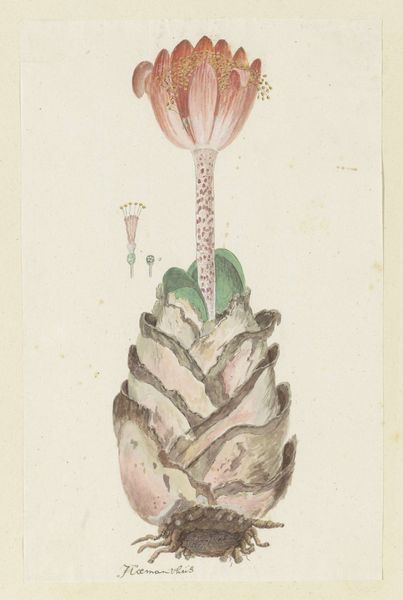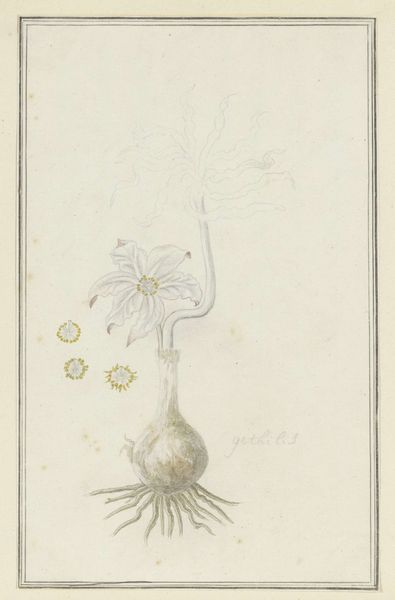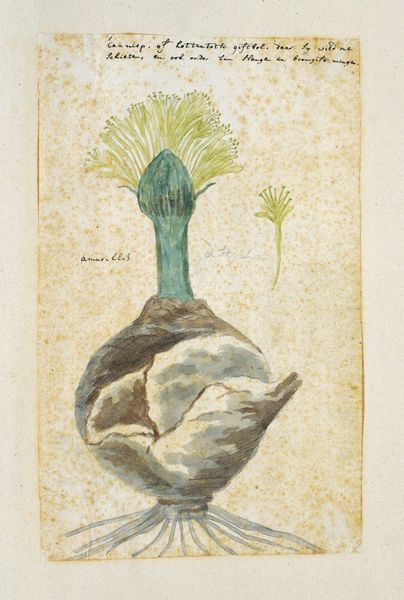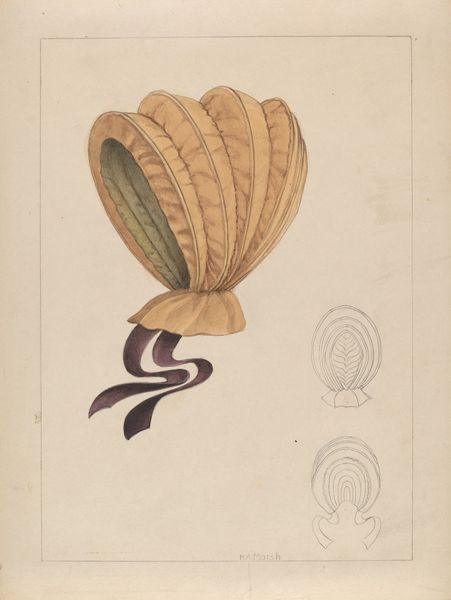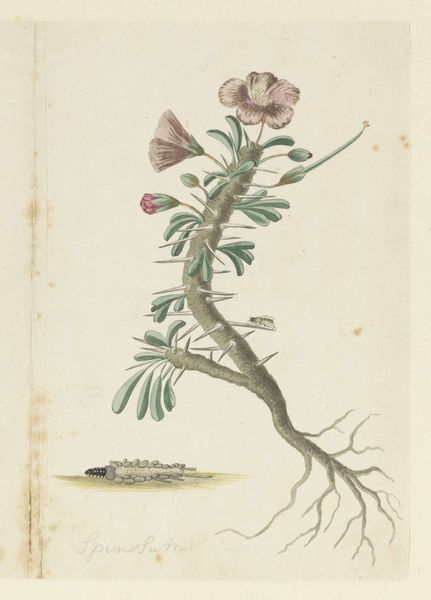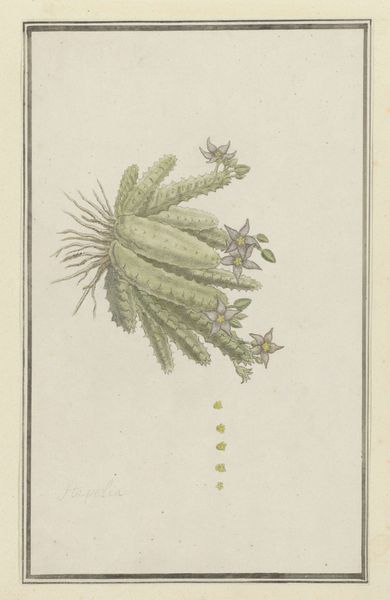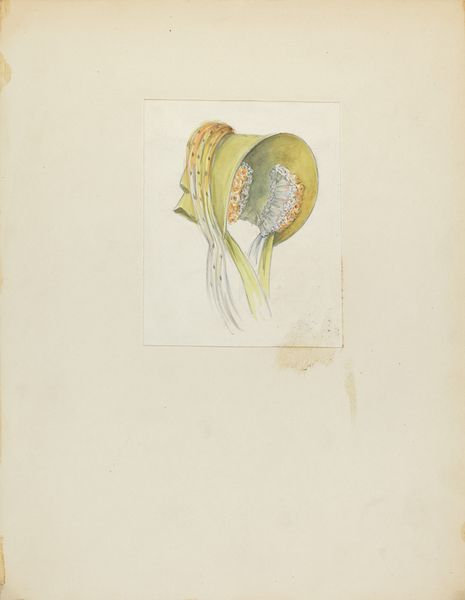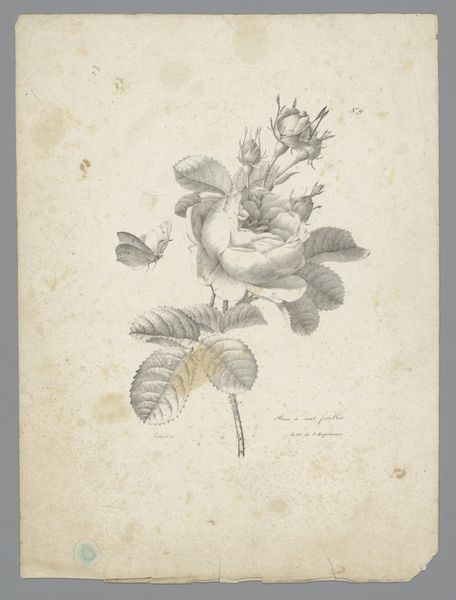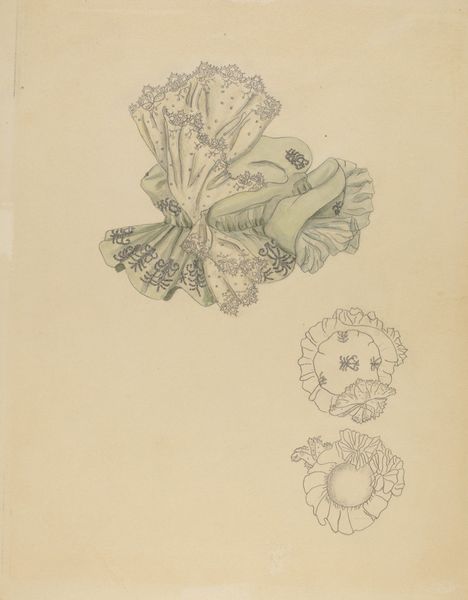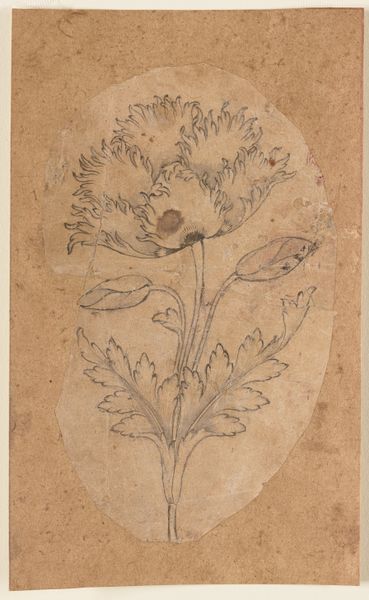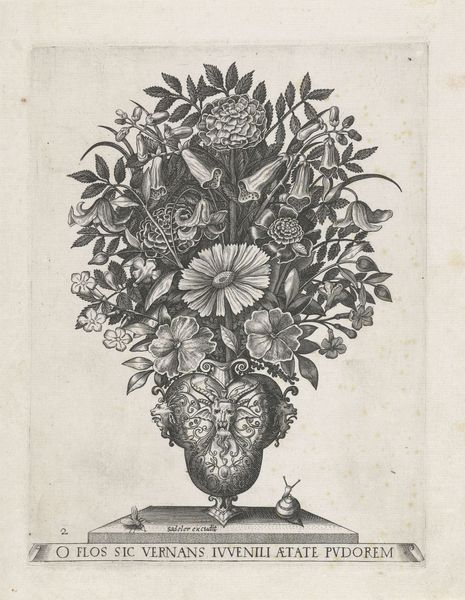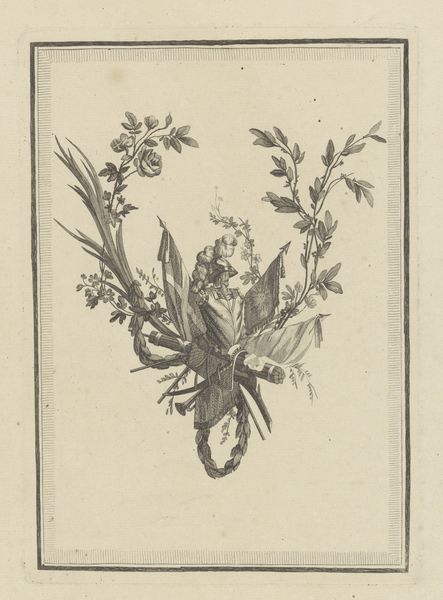
Dimensions: height 660 mm, width 480 mm, height 315 mm, width 188 mm, height mm, width mm
Copyright: Rijks Museum: Open Domain
Curator: Robert Jacob Gordon, possibly sometime between 1777 and 1786, created this watercolor and pencil sketch on paper titled “Haemanthus coccineus L.” also known as the Blood flower. It’s quite striking, isn't it? Editor: Yes, my first thought is a tension between delicacy and almost, dare I say, rawness. The bloom itself is beautifully rendered in watercolor, ethereal even. But that bulbous base—it feels much more grounded, almost primeval. Curator: It is fascinating how Gordon plays with those contrasting elements. Considering the period, we see botanical illustrations becoming incredibly popular, driven partly by colonial expansion and the need to document new species. But, how does Gordon subvert that tradition? Editor: Exactly. It feels like more than just a scientific record. There’s a real sense of place embedded in this image. The "blood flower" as it’s called conjures not only its color, but perhaps something of the exploitation of the land. Colonialism inextricably links naturalism with extraction and domination. Curator: That’s a keen point. Looking closer at his technique, it’s evident the artist isn't just presenting botanical information. The loose, flowing brushstrokes and earthy palette evoke Romanticism, hinting at a more emotional or spiritual engagement with nature, a sharp pivot against sterile objectivity. Editor: And the choice of the flower itself! The 'blood flower' immediately provokes an unsettling emotional response. This piece acts as a symbol – both an allure into natural beauty and as an eerie portent tied to sociopolitical struggles rooted deeply within this blood-soaked ground. Curator: It makes you wonder about Gordon’s personal position in all of this. Was he simply documenting, or consciously reflecting on the complexities of his environment and time? It makes this rendering much more powerful and poignant. Editor: It’s a potent visual reminder that what may initially seem as a simple illustration carries a complex dialogue around botanical classification, environmental transformation, and political expansion, challenging perceptions that nature remains passive or apolitical. Curator: A necessary reflection, certainly. This artwork has given us both an aesthetic appreciation and critical lens for analyzing a painful era of exploration and colonial expansion. Editor: Precisely. Hopefully, in approaching and examining it in these combined ways, we not only honor history, but also extract tools to approach more just, socially engaged modes for how we exist and interact with our contemporary reality.
Comments
No comments
Be the first to comment and join the conversation on the ultimate creative platform.
